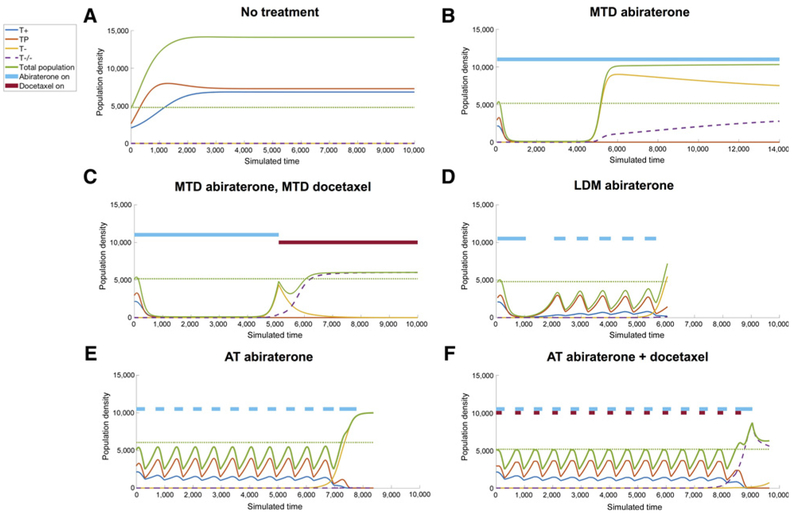Figure 3.
Simulation results. Six example therapy simulations of a representative virtual patient with identical initial parameters (, , a12 = 0.7; a13 = 0.8; a21 = 0.4; a23 = 0.5; a31 = 0.6; a32 = 0.9; δ = 0.05; c1 = c2 = c3 = 1.5; c4 = 0). The green dotted line shows the initial population size. A, No treatment leads to unhindered tumor growth to carrying capacity consisting primarily of TP cells. B, MTD of abiraterone results in competitive release of the T− resistant population. C, Maximum tolerated dose of docetaxel administered after abiraterone results in a good short-term response, with a relapse of the doubly resistant T−/− population. D, Metronomic abiraterone (LDM) also results in competitive release of T−, although delayed compared with MTD. E, An adaptive dose schedule of abiraterone (primary) is a personalized approach responsive to the tumor, which delays the onset of resistance, which may be extended by well-timed combination of docetaxel (secondary), shown in F.

